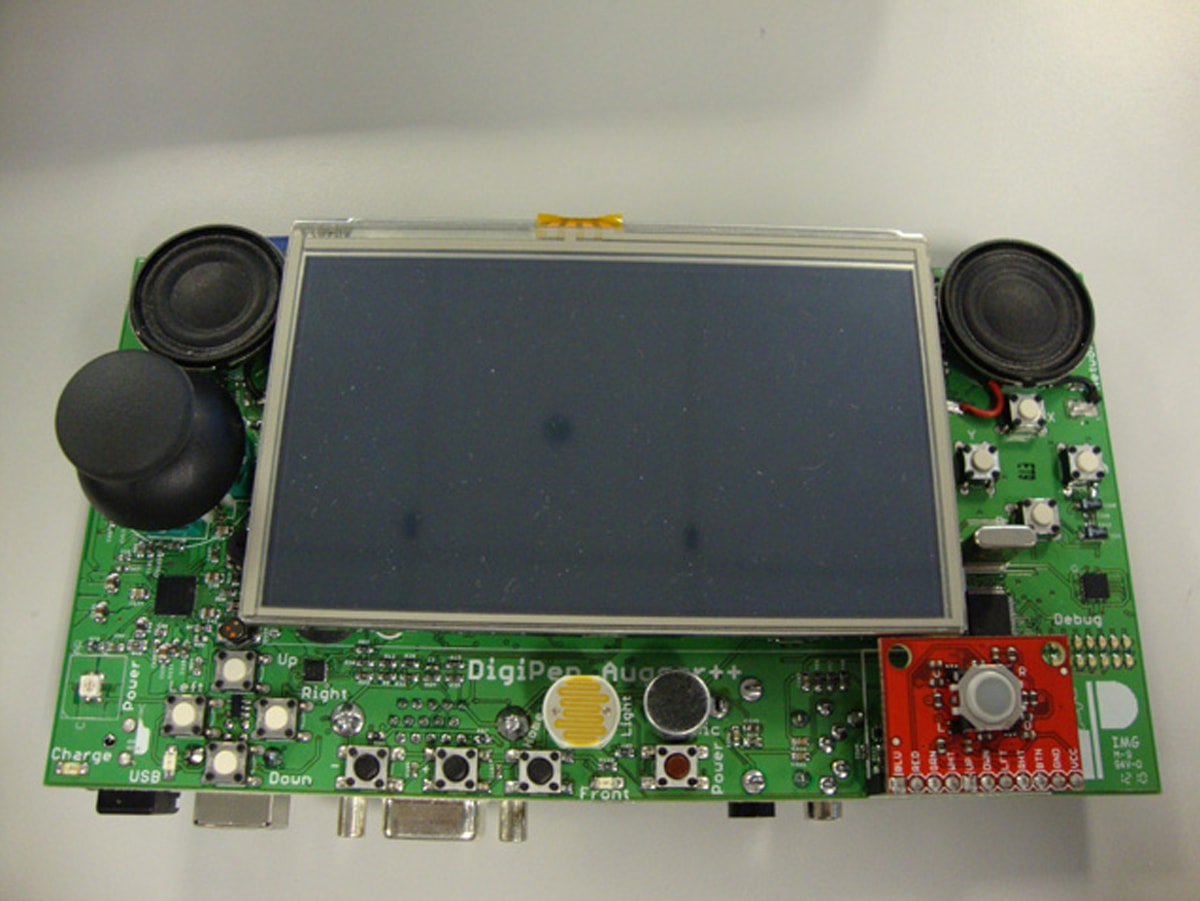DigiPen graduate Chris Clark has always been a tinkerer — forever interested in figuring out how things work. Growing up, he says, any piece of electronic equipment he might have received for Christmas was destined to be taken apart, sooner or later.
“I remember I had an electronic train, and I found out somehow that, ‘Oh, some batteries are rechargeable,’” Chris says. “I thought, ‘Whoa! Why are the normal batteries not rechargeable?’”
In that instance, Chris’s curiosity led to a potentially dangerous science experiment (in other words, don’t try this at home), in which he hooked up his dead alkaline batteries to a train controller in an attempt to give them a revived charge.
“It was semi-successful until the batteries blew up,” he jokes.
While Chris approaches his work much more safely and knowledgeably these days, his inventive spirit remains as intact as ever. As a research engineer at Michigan-based Gentex Corporation, Chris helps create new and improved driver-assist devices for automobiles.
One of the company’s signature products, for instance, is an automatic-dimming mirror that uses a chemical reaction triggered by headlight beams to reduce nighttime glare while driving. Another product, known as SmartBeam, uses a tiny camera and microprocessor to watch the road and algorithmically control the activation of high beams based on moment-to-moment traffic conditions.
Board bring-up would be like the first time you boot a device up. You’re writing the initial software drivers for it. You’re debugging the hardware.”
Drawing from his experience gained in the B.S. in Computer Engineering program, Chris helps to design and configure the various embedded systems and applications that power those devices.
In some cases, that means testing and profiling new microprocessors to replace within existing products, taking advantage of cheaper and more powerful CPU technology as it becomes available. In other cases, it’s working with circuit boards and soldering together the various components for a new prototype device, as well as testing and working with the device to create a baseline level of functionality — a process commonly referred to as board bring-up.
“Board bring-up would be like the first time you boot a device up. You’re writing the initial software drivers for it. You’re debugging the hardware. You’re having to work very closely with it to get it to operate the way it’s supposed to before you can even run your higher level applications,” Chris says. “Like if you buy a laptop, you usually expect that your memory is going to work properly. Well, if you were the guy who soldered that memory module, that’s not necessarily the case.”
For Chris, it’s a type of work he particularly enjoys.

“I do like working with my hands a lot,” Chris says. “And I do like programming, but I also really like the ability to say, ‘Hey, let’s take that programming and let’s turn on a light!’”
As a CE student at DigiPen, Chris says he appreciated the opportunity to explore those more tangible applications of computer technology, particularly through the program’s extensive project coursework.
I do like programming, but I also really like the ability to say, ‘Hey, let’s take that programming and let’s turn on a light!’”
During his junior and senior years, Chris’s project team designed and built an original handheld gaming system called the Augger—complete with LCD screen, camera, input controls, and a custom-built operating system. The device itself went through several iterations, becoming steadily smaller in size and more robust in computational resources.
“My favorite thing to do was basically that low-level board bring-up, and that’s what I’ve done many times over in my current job,” Chris says. “I like doing it so well I keep finding myself in places where I’m doing it again.”
In 2012, Chris applied his professional interests to an engineering contest through BeagleBoard.org. Participants were tasked with creating an original plug-in device (called a cape) to be used with the BeagleBone, a small open-source computer popular among hobbyist developers, to create additional functionality.
Chris created multiple prototypes, including a prize-winning cape with a built-in camera, gyroscope, and accelerometer. Chris says he has even considered developing the project further and making the device available for purchase.
I don’t have a master’s degree, but I’ve been told many times I basically have that level of expertise.”
With the proliferation of open-source technology, such as Linux and Linux-based devices, Chris says there will be many career opportunity for engineers — whether in games, automotive manufacturing, or any number of technology fields — for a long time to come.
“At Gentex as well as probably every other company on earth, we use open-source software in some shape or form,” Chris says. “If you’re comfortable on Linux, and if on top of that you can write drivers — especially for anything that’s Android-base — that’s going to be huge.”
Even as he explores new avenues in computer engineering, Chris credits DigiPen for providing a strong foundation of knowledge and experience that he continues to build upon.
“And I don’t have a master’s degree, but I’ve been told many times I basically have that level of expertise,” Chris says. “It’s a good, solid program.”